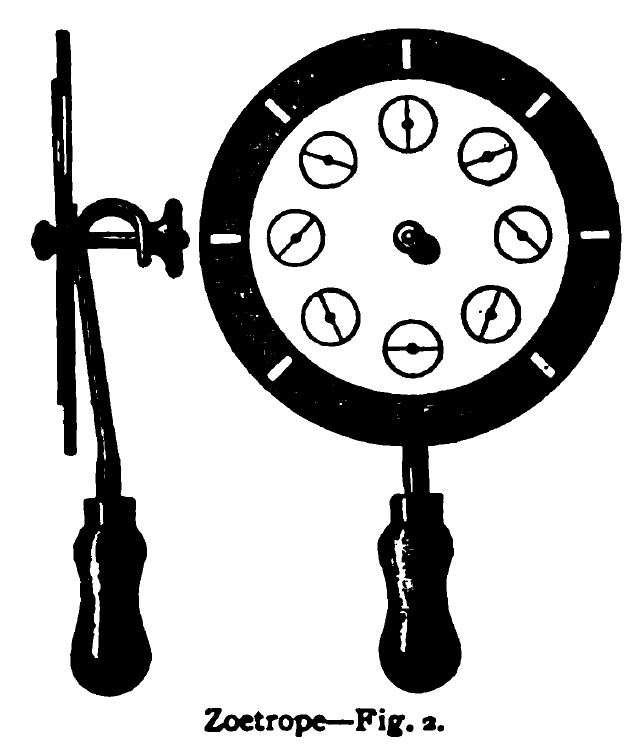Thursday, February 27, 2014
Zoetrope -- 27-February-2014
From The Young Folk's Cyclopædia of Games and Sports by John Denison Champlin and Arthur Elmore Bostwick, 1890. Several times when I was young I took a book out of the Anza Branch Library that explained how movies work. I can't remember the title. I tried to make several of the devices in the section on early moving picture devices. The zoetrope was harder than the thaumatrope. I finally produced a good zoetrope for a college class that combined science and humanities.
ZOETROPE. A toy by which a succession of figures in different attitudes are made to appear like a single one in motion. The simplest form of the toy consists of two disks fastened on the same axis, six or eight inches apart, so that they will turn on it together. The figures are arranged on one, as shown in Fig. 1, and in the other are a number of slits equal to that of the figures. The figures represent some action at successive instants ; thus, in the first picture the man has his bow drawn to one side ; in the next it is pushed a little farther along, and so on. If any one look through the slits while the discs are turned, and direct his attention to any one spot, he will see a different picture in that spot every time a new slit comes in front of his eye, and he will not see one picture moving away from the spot and another coming up, because the pasteboard between the slits then comes between. Thus he will see in the same place a succession of momentary pictures, each in a slightly different posture, and it will seem to him as though he saw the man playing the bass viol. In this way an endless variety of movements may be counterfeited.
The disk bearing the figures is often made a little smaller than the one with the slits, and fastened with it on the axis at the same point (see Fig. 2). The observer then looks through the slits at a mirror, and the effect is the same as before. The zoetrope in this shape is more easy to manage. Another form is a round box, open at the top, which revolves on an upright stand (Fig. 3). The figures are on strips of paper which fit around the inside of the box, and the slits are vertical ones in the edge.
Six such slips are shown in Fig. 4. The observer looks through the slits toward the figures on the opposite side of the box. The effect is the same as before, though in this case the figures and slits are moving in opposite directions. An arrangement has been devised by a Frenchman for showing the zoetrope to a large audience with the aid of the MAGIC LANTERN. The word zoetrope is from the Greek zoe, life, and trepein, to turn. The toy is also called the Magic Wheel and the Zoöpraxiscope, from the Greek zoe, life, praxis, action, and skopein, to see.
Subscribe to:
Post Comments (Atom)




No comments:
Post a Comment
Comment moderation is turned on. Your message will appear after it has been reviewed.